The Holy Mountain (1926)
Directed by: Arnold Fanck
Written by: Arnold Fanck
Starring: Ernst Petersen, Frida Richard, Leni Riefenstahl, Luis Trenker
AKA DER HEILIGE BERG
Germany
AVAILABLE ON BLU-RAY: 17th June, from EUREKA ENTERTAINMENT
RUNNING TIME: 100 mins
REVIEWED BY: Dr Lenera, Official HCF Critic
Engineer and skiier Karl and his younger friend Vigo both watch and fall in love with dancer Diotima. When she gives him her scarf, Vigo mistakenly believes she is also in love with him, but her eyes are really for Karl. Some time later, Karl sets off to find the best mountain to celebrate his engagement. He returns to see Diotima comforting a man who is Vigo, though he doesn’t recognise him. Believing that Diotima is cheating on him, he decides to go on a dangerous climb, and guess who he wants to take with him.…
No, this isn’t a review of Alejandro Jodorowsky’s weird and wonderful masterpiece from 1973. That can be found elsewhere on this website, though seeing as it’s a very early review of mine, it can probably do with some improving, especially as I hold Jodorowsky and especially The Holy Mountain in extremely high regard. What we have here instead is a German silent film from the ‘20s, but don’t be too disappointed because it’s really rather interesting and should certainly hold the attention of the more adventurous film watcher. Even though I’ve viewed the odd screener, my experience with silents still isn’t as extensive as it should be, though in terms of German cinema I am of course aware of and love many of the German Expressionist films [every horror fan needs to see The Cabinet Of Dr. Caligari and Nosferatu], plus the incredible sci-fi epic Metropolis. The Holy Mountain is the hoariest tale of romantic woe you can find, its story one that was as old as the hills even when it was made, and may seem hopelessly dated and naive to some modern viewers, but as it progresses you may be surprised how involved you’ll be, while its continual emphasis on nature, including some photography that is quite striking even today, and the relating of the characters to the great outdoors, give the proceeding a certain freshness and even some allegorical weight. I was greatly reminded of Touching The Void in the final third.
The director was Arnold Fanck, who liked to shoot films in mountainous locations and thereby kicked off what became a popular subgenre in Germany, the ‘mountain film’. The story of the making of this one would make a good movie in its own right. It was mostly filmed in and around Upper Engadin, a small Swiss village about six miles west of St. Moritz, with a small amount of studio work in Berlin. Production began in January 1925, but filming was delayed by snow turning to slush, ice melting the expensive ice palace set constructed on a frozen lake so it had to be rebuilt several times [which took four weeks each time], and various injuries afflicting star Leni Riefenstahl, supporting cast member Friedrich Schneider, and cinematographer Hans Schneeberger. According to Riefenstahl, Fanck was deeply in love with her, but she was involved with co-star Luis Trenker, a situation Fanck continually tried to undermine by privately suggesting to Trenker that Riefenstahl and Schneeberger were secretly having an affair. When the extreme weather returned, it took great professionalism for everyone to sleep in the same winter cabin without chaos ensuing. The producing company UFA [Universum Film AG] wanted to shut down production, but Riefenstahl’s shooting of the flower-filled springtime scenes convinced UFA to keep the production – well, according to her. She shot more footage later even when a magnesium torch burst beside her and singed half her face. The film was released during the 1926 Christmas season and was a hit, even outside Germany, though critical response was mixed.
Opening text lists some names and informs us that the “well known sportsmen” really are performing the feats that you see, and that the film is “inspired by true events”. It’s nice to know that, even back then, filmmakers were doing this kind of fraudulent pretending to help sell their product. Then the first chapter, entitled ‘Prelude’, of what is apparently “A Drama Poem with Scenes from Nature”, gets underway, opening with a close-up of Diotima asleep before we see her sitting on a rock by the sea before doing a dance. It’s a bit strange this dance. Riefenstahl was a professional dancer, so much of it’s quite elegant, sometimes bordering on the balletic, yet on occasion a bit clumsy – though I was as much intrigued by the way the cameraman sometimes chooses to point the camera directly into the sun. The light beating down on the waves does look pretty as we get that Diotima is linked with the sea, and by extension lower ground. By contrast, our first sight of Karl, from the point of view of Diotima, is atop a mountain peak, showing that his affinity is with high up places and rocks. Karl first sees Diotima via a photo of her which advertises her dancing show. He and his pal Vigo attend, and by god we get not only Diotima dancing for what seems like forever but beginning with a reprise of her beach dance. Both men are transfixed [well, so was I in a strange kind of way] and are immediately in love. Their differing reactions show their characters. Karl goes off on his own to the mountains to savour his memory of the moment, but Vigo puts a rose in the seat of her car taking forever to do it so that Diotima can see him, then takes off her headscarf and puts it on himself. I’d have thought that even back then that wouldn’t be a particularly polite thing to do, but then here it’s done slightly erotically, and then she lets him keep it. This is a big mistake, as he now thinks she likes him as much as he likes her. It’s interesting that Karl doesn’t seem to be linked with an aspect of nature at all, he’s just defined by his skill at winter sports and his love for Diotima.
We next see Vigo playing an accordion while Diotima dances, but the real romance is between Karl and Diotima, the first proper meeting of the two being just outside Karl’s cottage part of the way up a mountain, though as the inter-titles tell us, “the sea and the stone can never be wed”. We then flash forward to the couple being engaged, and we could have done with some time given to them actually falling in love, instead of the endless – and I mean endless – skiing footage from a competition that we soon get, though if you do like skiing you’ll enjoy it, and as well a surprising variety of shots employed [the camera is sometimes strapped to a ski], there are admittedly also some cool moves and stunts, so much so that you half expect James Bond to make an appearance. Diotima’s caressing of Vigo’s hair makes one wonder if she does fancy him a bit, or maybe she’s just frustrated because Karl keeps going off to those darn mountains at every opportunity. But in the end I think we’re supposed to believe that this isn’t really a ‘proper’ love triangle because the woman doesn’t love both men, even though Karl seeing a man bury his head in Diotima’s lap is enough to send him doolally. I’m not entirely sure why he takes Vigo along on what I assume [a few things aren’t really clear] is a suicide mission, seeing as he doesn’t know that he was the ‘one’. In fact there are so many other things he could have done that would make more sense. But the final half an hour still thrills, the two male stars clearly out there doing it for real if maybe not as high up as their characters are supposed to be, while it may not end exactly the way you expect it. There’s good editing between our two guys on the mountain and Diotima and others off it – the juxtapositioning of cliffhanging peril and folk dancing in a bar works especially well – and some nice shots of searchers reflected in water and illuminated by torches. And you even get a fairly elaborate fantasy sequence taking place in an environment with ice everywhere, an environment that’s really convincing because all this ice is, of course, real.
While the closing shots are an effective sober mirroring of the ones at the beginning, It’s rather a shame that the film concludes with a statement about the importance of faith, seeing as it seems to otherwise ignore conventional religion and instead appears to worship Mother Earth herself. The camera often prefers to linger on tree branches that are iced up, bubbling brooks, and the like, rather than the people, while inter-titles lean slightly to the poetic, with translation from the German that I imagine is extremely accurate, and dialogue that forever rams home the central theme in a simple, direct fashion i.e. “why is nature so beautiful to us”? “Because we invest our very souls in it”. Fanck’s staging is generally fine, and he handles certain moments with some power, like Karl’s shock at Diotima’s supposed infidelity which shows the same shot of Karl’s head falling back onto a rock twice. However, he was obviously unable to reign in his female star. Other cast members tend to be quite restrained by the standards of silent movie acting – I especially liked Frida Richard as the continually worried looking mother of Karl – but Riefenstahl overacts horrendously whenever she’s required to emote, flinging her arms into the air, half-swooning against any nearby piece of furniture or wall, and hysterically biting her hands when she’s not throwing her head into them. I wouldn’t say that she’s at all a beauty either, but she does have a strange kind of magnetism and earthiness about her even though I feel somebody more ethereal may have been more appropriate. And yes – this is the Leni Riefenstahl who later worked for the Nazis and made Triumph Of The Will, which remains both appalling propaganda and a brilliantly made documentary.
The music score, something that can seriously hamper the effectiveness of a silent film, is credited to Edmund Meisel, who wrote the score that originally accompanied the movie, though it sounds like what we have here is a re-recording with some modifications made. There’s far too much glockenspiel, and you get a few of the usual borrowings from very familiar classical music pieces, but the themes and motifs do underline the different aspects of the tale quite well without going over the top. The climbing music, with piano evoking the precarious nature of the situation while violins depict the emotion of the characters, works especially well as these things go. The Holy Mountain is probably not one to buy if you’re fairly new to silent films, in which case much of it may seem laughable even if one can still admire the quality a lot of the outdoor footage, and even if some of the images may still stay with you. I found the odd portion tedious but far more of it quite fascinating as a tribute to nature, its conditions and its contradictions [how can those bucolic, calm mountain landscapes full of flowers, shepherds, people skiing and so forth transform into a place so forbidding, bleak and dangerous?], and how much it dwarfs us humans and our petty intrigues.
Rating: 









The Holy Mountain was previously on DVD from Eureka, and on Region ‘A’ Blu-ray from Kino Lorber. Eureka are probably using the Kino print and tweaking it. The restoration was done by L’Imagine Ritrovata, but I’m sure that the golden tinting, sometimes replaced by blue, was in this case how the film was so I’m not going to moan about the company here. Unsurprisingly for a film of this period there’s some considerable damage in places, especially in the frayed left edge of the frame, and considerable fluctuation of contrast is visible throughout. Sometimes the ratio will change for a shot or two, it occasionally seeming like we’re viewing the film through a window. This is no doubt due to missing bits that had to be sourced from inferior prints. But I’ve seen silent films in far worse condition, even fairly recently. Though are times where the clarity really shows off the beauty of much of the cinematography and where the grain is perfectly managed. Given that this was a film from 1926, I was quite satisfied all in all, and I think you will be too if you’ve seen a lot of very old movies.
Eureka have ported over the Kino audio commentary and retained the 1993 three hour documentary The Wonderful, Horrible Life of Leni Riefenstahl that was on their older DVD release but not on the Kino except as a tiny excerpt. I wasn’t entirely satisfied by the commentary. Travis Crawford spends most of it going through the careers of the main people involved with the film and mentioning other films. Seeing as I knew little about this kind of cinema, I did find some of it interesting, particularly the overview of the ‘mountain film’ subgenre, and every now and again some more information on The Holy Mountain is divulged, but the track could have done with far less biographical detail and far more analyses of what’s taking place on screen. Seeing how this kind of thing in commentaries is a major bugbear with me, I was surprised how much I did enjoy portions of the track, but after a while it gets a bit tedious.
A three hour long documentary seemed daunting, but The Wonderful, Horrible Life of Leni Riefenstahl had me absolutely riveted, and even caused me to stay up very late watching it all instead of viewing the second half this morning which is what I’d intended. It charts her career and goes with great detail into her film roles which mostly consisted of ‘mountain films’ before going into her interesting-looking directorial debut Lowlands and then delving into her controversial work for and with Hitler, before finishing with what she’s been up to since [she became a scuba diver at age 70. What makes all this so interesting is that Leni visits many locations and watches the films as she recollects things [for The Holy Mountain she had to be covered by a real avalanche – several times] and is probed by the interviewer, particularly on her Nazi phase. She denies the claims of Joseph Goebbels [who disliked her because she rejected him] in his diaries of her being a frequent visitor to Hitler’s house, claims that the flattering letter she wrote to Hitler congratulating him on conquering France was just because she thought the war was over, denies knowing the horrid stuff the Nazis did until after the war, and says that art and politics are separate. I found it hard to always believe her despite the emotion she sometimes showed, but I couldn’t help but have some compassion for this woman who was vilified and made a virtual outcast in the second half of her life.
While I did find much to admire and enjoy in The Holy Mountain even though it’s definitely not a film to watch if you’re fairly new to silents, for me it’s the documentary that’s the real jewel here. It’s only available on Region ‘A’ on its own at a rather greater price. Therefore, Eureka’s release comes Highly Recommended.
SPECIAL FEATURES
*1080p presentation on Blu-ray, from a 2014 2K digital restoration
*Score by Aljoscha Zimmerman, available in both LPCM 2.0 and DTS-HD MA 5.1
*Original German intertitles with optional English subtitles
*Feature Length Audio Commentary by film historian Travis Crawford
*The Wonderful, Horrible Life of Leni Riefenstahl [180 mins] – Ray Müller’s definitive documentary on the life and career of Leni Reifenstahl.
PLUS: a collector’s booklet featuring a new essay by critic and film historian Kat Ellinger, and a 2004 essay by Doug Cummings from the original Masters of Cinema DVD release

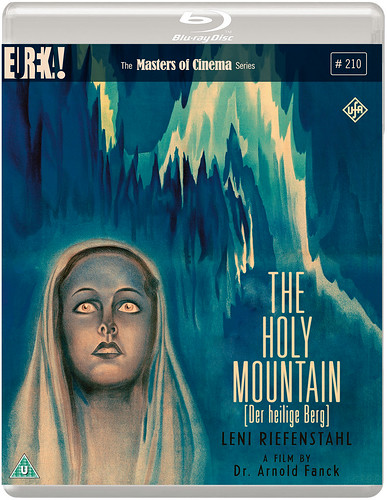
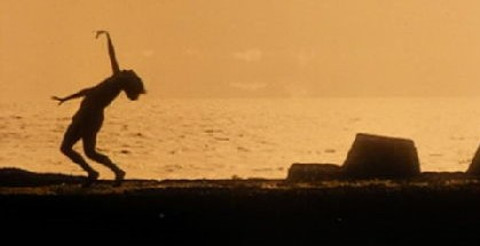
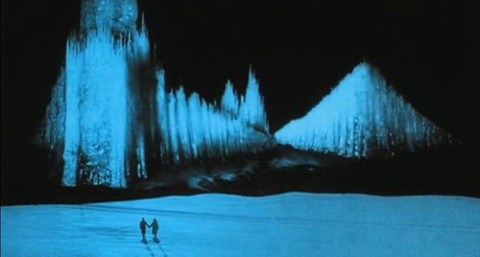


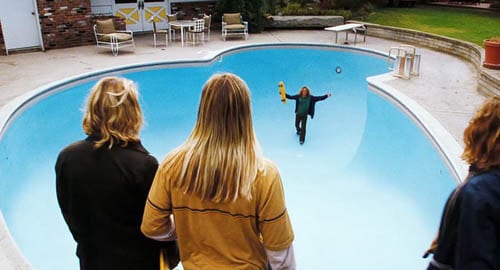
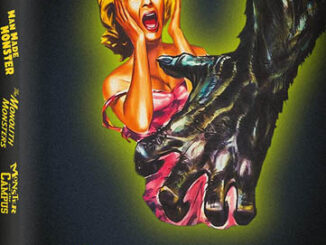
Be the first to comment